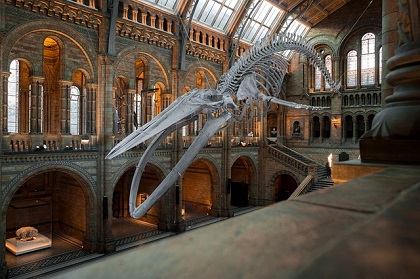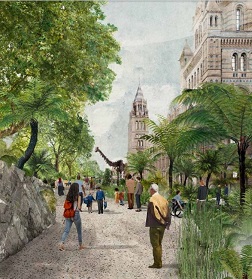Thou Art
Creative geniusSolid as a Rock
NEW GARDENS LAY FOUNDATIONS FOR NATURE IN THE FUTURE

After 5 years and £25m funding a new 'living exhibition' is set to open this week (Thursday 18th July 2024). Collective creative skills and imagination have gone into the vision to wow visitors to the Natural History Museum afresh by the wonder and beauty of creation as they are welcomed into the newly transformed gardens, which have been described as 'a haven for wildlife and people in the heart of London.'
Guided through a 'living timeline' of the natural history of life on Earth from its very beginnings to the present day, the gardens, are part of the museum's Urban Nature Project, which aims to increase biodiversity, accessibility, opportunities for education and study with a 'living laboratory'. Set in 5 acres and one of the largest public green space projects in London, they contain grassland, wetland and woodland habitats, the sights and sounds of nature and samples of the country's oldest rock.
The 'living timeline' of geology and botany offers a mini canyon clad in ancient stone collected from across the UK which date from 2.7 billion years ago until the present day. Starting in the tunnel leading from South Kensington Tube station, the journey through 18 different types of rock weave towards the main entrance and open out into the Evolution Garden further telling the story of our natural history through an immersive timeline of plants and representations of reptiles, birds and mammals. Once it opens out into the garden every metre represents 5 million years.
The centrepiece, amongst Wollemi pines, dwarf ginkgos and flora chosen to evoke the feel of a Jurassic landscape and marking roughly 150million years ago is a bronze cast of Dippy the Dinosaur, the museum's famous diplodocus skeleton that stood in the museum's entrance hall before being replaced by a blue whale in 2018.
Following the story of how life on Earth has changed over time, from the days of the dinosaurs through to today, visitors can also explore the Nature Discovery Garden, a space that illustrates the biodiversity that can be found in the UK's urban spaces, with an accessible sunken pathway that winds between the garden's ponds, populated by frogs, newts and dragonflies. As well as being a place to rest and picnic whilst people to learn about the diversity of life on Earth and how our planet is changing over time, the Nature Discovery Garden is also going to be used as a living laboratory where scientists and volunteers can learn best how to protect nature.
Dr Alex Burch, the head of public programmes, said: '.
"The gardens will be home to scientific sensors gathering environmental DNA and acoustic data, to monitor, understand and protect urban nature. The installation of this new technology and continued data collection will make our gardens one of the most intensively studied urban sites of its kind."
The gardens are free to enter. For more information click HERE.

Credit for pictures above: The Natural History Museum